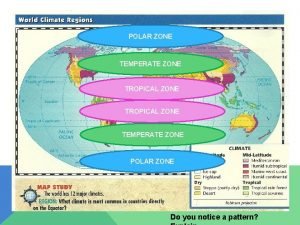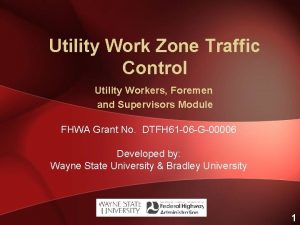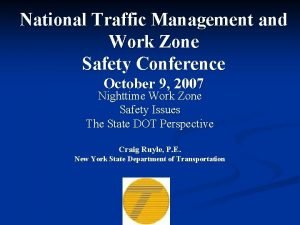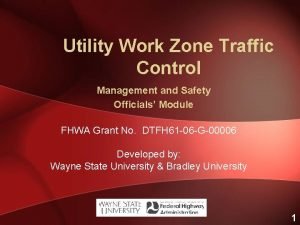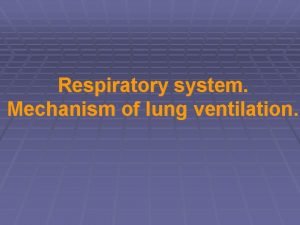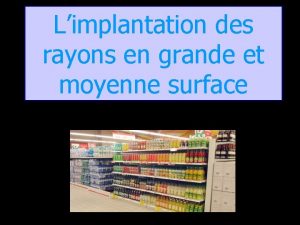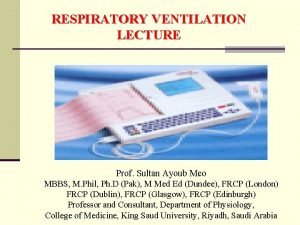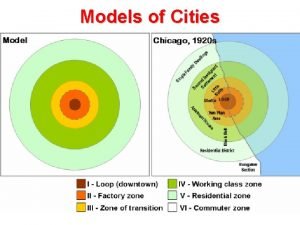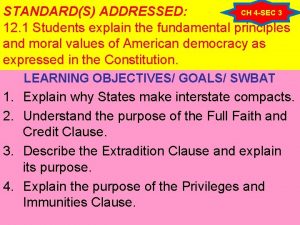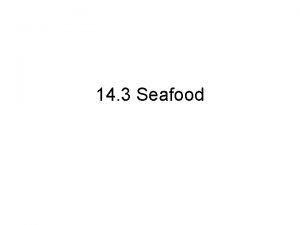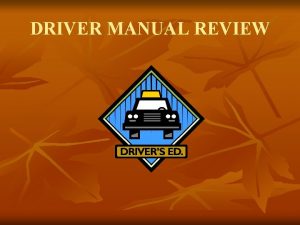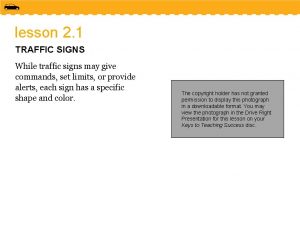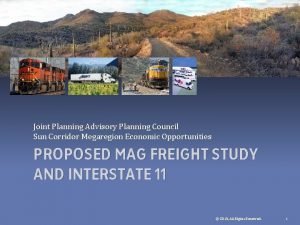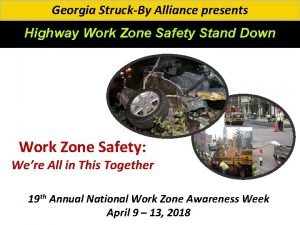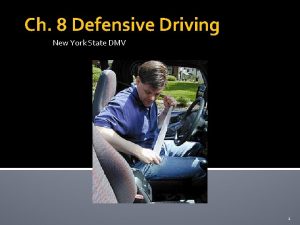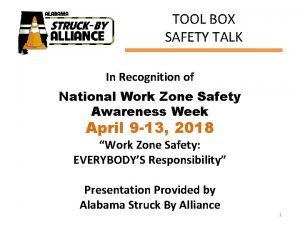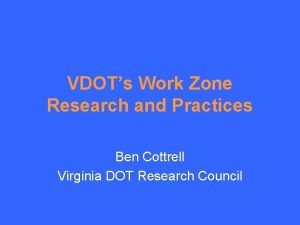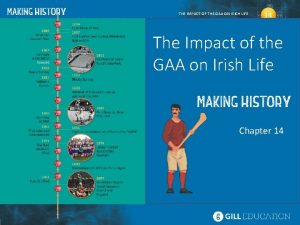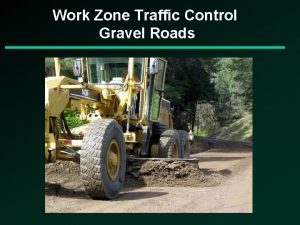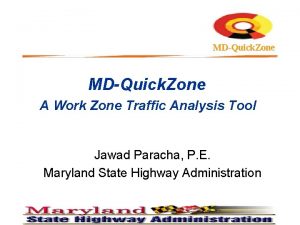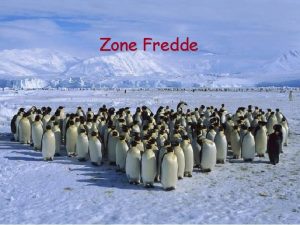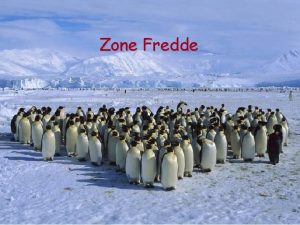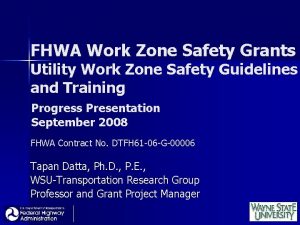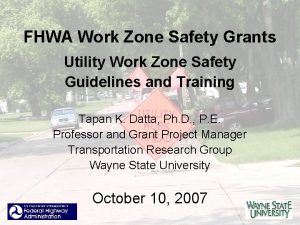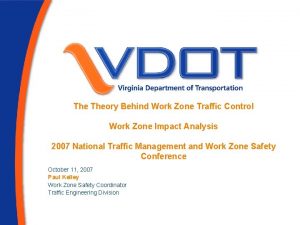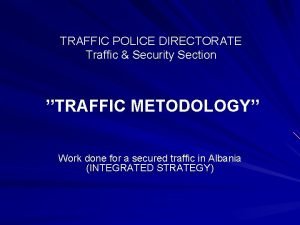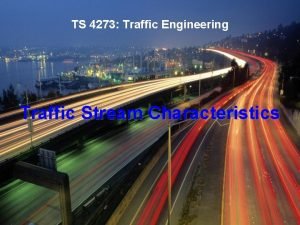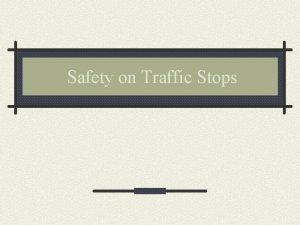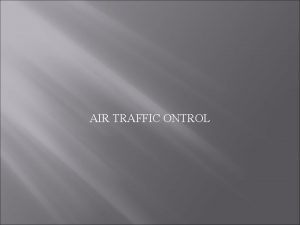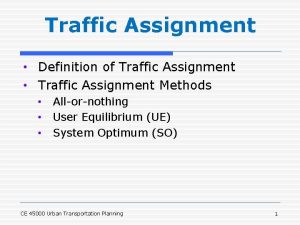Traffic Impacts of Short Term Interstate Work Zone






























































- Slides: 62

Traffic Impacts of Short Term Interstate Work Zone Lane Closures: The South Carolina Experience Wayne Sarasua, Ph. D. , P. E. sarasua@clemson. edu Making Work Zones Work Better

Overall Goals • Develop a means to determine an actual volume of vehicles per hour per lane to be used to determine when lane closures may be permitted. • Develop a means to estimate speeds, delays, and queue lengths due to short-term lane closures in work zones Making Work Zones Work Better

Overall Goals (Cont’d) • Analyze the effects of roadway grades, truck percentages, and lane widths on work zone traffic characteristics when lane closures are present Making Work Zones Work Better

Research Participants • Clemson University – Wayne Sarasua – David Clarke – Several GRAs • The Citadel – William J. Davis Making Work Zones Work Better

Knowledge Acquisition and Literature Review • Strategy sessions • Comprehensive Literature Review • Survey of State DOTs Making Work Zones Work Better

Classical Traffic flow Theory Making Work Zones Work Better

Capacity Measurement • Maximum rate of flow (HCM) • Mean queue discharge rate • Hourly rate of flow under congested conditions • Flow rate at which traffic changes from uncongested to queued conditions Making Work Zones Work Better

Traffic Measurement Techniques • Traffic Volume/Headway – Video surveillance – Inductive loops with counters – Road tubes with counters – Inductive counters • Speed measurement – Road tubes – Radar or Laser Making Work Zones Work Better

Factors Influencing Freeway Work Zone Capacity • • Work zone configuration Highway grade Presence of freeway ramps Traffic stream make-up Weather conditions Intensity/duration of construction activities Lighting Making Work Zones Work Better

Volume Thresholds Making Work Zones Work Better

Instrumentation and Field Data Collection • Design the surveillance setup, acquire hardware, and implement design • Field test and make adjustments • Field test at an actual interstate work zone • Collect data at various rural and urban work zone sites Making Work Zones Work Better

Wind Research Tower Making Work Zones Work Better

Surveillance Setup • Tall tripods from Sky. Eye Corporation Making Work Zones Work Better

Roadside Setup Making Work Zones Work Better

Base of Tripod Making Work Zones Work Better

Connecting Cables Making Work Zones Work Better

Autoscope camera and pan/tilt unit Making Work Zones Work Better

Raising the tripod Making Work Zones Work Better

Tie-down and Ground Anchor Making Work Zones Work Better

Raised Tripod Making Work Zones Work Better

Tripod Setup on a Bridge Making Work Zones Work Better

Great Perspective View Making Work Zones Work Better

Peripherals Making Work Zones Work Better

Surveillance Setup Summary • • Tripods are of adequate (not optimal) height Stable, even in windy conditions. Very flexible Enhanced safety Little or no effect on traffic operations Need about an hour to setup completely Breakdown takes about 1/2 hour Making Work Zones Work Better

Projects • Collected data at 22 locations • First data collection on 9/12/01 • Summary: – I-85: 13 Projects – I-26: 6 Projects – I-77: 1 Project – I-385: 2 Projects Making Work Zones Work Better

Making Work Zones Work Better

Making Work Zones Work Better

Data Collection Findings • Night time data collection not ideal – Autoscope not as effective – Volumes generally low except I-85 • Difficult to obtain specific information on location of closure in advance • Setup and procedures adequate for providing data to meet project objectives Making Work Zones Work Better

Data Analysis • Graph and analyze data • Develop predictive model as a function of known model parameters – Traffic and truck volumes – Length of lane closure – Lane widths – Shoulder characteristics – Roadway grades Making Work Zones Work Better

Underlying Concepts k=q/s (1) where: k = density (veh/mi) q = flow (veh/hr) s = speed. (mph) Can also be expressed in terms of average vehicle spacing: k=5280/spacing Making Work Zones Work Better (2)

An Example of Capacity Given: Speed limit for short term work zone projects in South Carolina is 45 mph. Average spacing in saturated conditions for a speed of 45 mph is 150 feet per vehicle. Using eq. 2, k = 5280/spacing = 35. 2 veh/mi. From eq. 1, q = ks = 35. 1 * 45 = 1584 veh/hr. Making Work Zones Work Better

More Examples From eq. 1, for flow to stay constant, the density of the road must increase in proportion to the decrease in speed. This indicates that at lower speeds, there is willingness for cars to travel at closer intervals. Making Work Zones Work Better

Combining Data to Facilitate Analysis • No single project completely follows Greenshields’ generalized form • Necessary to combine data • Difficult to isolate the characteristics of individual projects • Underlying assumption that all projects that were combined were homogeneous Making Work Zones Work Better

Project Characteristics • Commonality: – Rolling terrain except I-26 south of Columbia – 12 -foot lane widths – Similar taper lengths • Differences – Type of maintenance activities – Work zone length – Number of lanes downstream Making Work Zones Work Better

Speed vs Flow 2 to 1 -lane Discrete 5 minute flows Making Work Zones Work Better

Speed vs Flow 2 to 1 -lane 12 consecutive 5 minute periods Making Work Zones Work Better

Considering Heavy Vehicles • Research has shown that heavy vehicles have a significant effect on capacity • Must be considered on a case by case basis • Most common approach is applying passenger car equivalents (PCE) Making Work Zones Work Better

Methodology for Determining PCE • Measured headways by analyzing video • Used software developed for project (Satflo 2) to record time and vehicle type • Results are tabulated and graphed Headway (seconds) Making Work Zones Work Better

Headway Frequencies by Vehicle Type Making Work Zones Work Better

Passenger Car Equivalents Grouped by Speed (MPH) <15 15 to <30 30 to <45 45 to < 60 > 60 Project RV Truck RV Truck 13 14 16 17 18 20 21 7 10 11 5 0 1. 32 0 1. 2 1. 37 1. 68 0 0 0 1. 89 0 2. 09 2. 04 2. 21 0 0 0 1. 52 1. 62 1. 23 1. 33 1. 42 1. 59 0 0 1. 16 0 0 1. 68 2. 06 2. 42 2. 22 2. 03 2. 2 1. 27 0 2. 13 1. 83 0 1. 28 1. 39 1. 5 1. 6 1. 98 1. 95 1. 58 1. 16 0 1. 4 1. 66 2. 14 2. 48 1. 95 2. 18 1. 98 2. 01 1. 89 0 1. 86 1. 4 1. 66 1. 44 1. 67 1. 41 1. 28 1. 58 0 1. 06 1. 46 0 1. 75 1. 92 2. 14 2. 75 2. 02 1. 85 0 0 1. 87 0 1. 11 1. 52 1. 26 0 1. 44 1. 7 1. 22 0 0 1. 15 0 1. 79 1. 85 2. 06 0 2. 12 2. 62 1. 91 0 0 2. 2 0 All 1. 414 1. 948 1. 414 2. 085 1. 497 1. 986 1. 511 1. 940 1. 375 1. 991 Making Work Zones Work Better

Average PCEs Used in Analysis Type of Vehicle Sample Passenger Car Equivalent Passenger car 10293 1. 00 RV 470 1. 44 Heavy Truck 2019 1. 93 Making Work Zones Work Better

Speed vs Flow 2 to 1 -lane Discrete 5 minute (PCE) Making Work Zones Work Better

Speed vs Flow 2 to 1 -lane 12 consecutive 5 minute periods (PCE) Making Work Zones Work Better

Modeling Methodology • Model Speed vs Density Relationship • From the resulting linear model, substitute k=q/s • Determine maximum Flow in PCE • Adjust for other factors • Formulate model for application to specific short-term work zones Making Work Zones Work Better

Speed vs Density 2 to 1 -lane Discrete 5 minute (PCE) Making Work Zones Work Better

Speed vs Density 2 to 1 -lane 12 consecutive 5 minute periods (PCE) Making Work Zones Work Better

Modeling Speed vs Flow s = -0. 395 k + 52. 54 (5 -minute discrete data) s = -0. 493 k + 54. 11 (5 -minute consecutive data) Substituting k=q/s gives: q= -2. 53 s 2 + 133 s (5 -minute discrete data) q= -2. 03 s 2 + 110. 7 s (5 -minute consecutive data) where: q = flow (pcphpl) s = speed. (mph) Making Work Zones Work Better

Speed vs Flow 2 to 1 -lane Discrete 5 minute (PCE) Making Work Zones Work Better

Speed vs Flow 2 to 1 -lane 12 consecutive 5 minute periods (PCE) Making Work Zones Work Better

Estimating Capacity First derivative of the s vs q model is slope of the parabola dq/ds = -5. 06 s + 133 5 -minute discrete data dq/ds= -4. 06 s + 110. 7 5 -minute consecutive data Slope of the parabola at maximum flow = 0. Setting the above equations = 0 give the speeds at maximum flow. Substituting into previous slide gives max flow (capacity): 1748 pcphl (5 -minute discrete data) 1483 pcphl (5 -minute consecutive data) Making Work Zones Work Better

Considering Grades • HCM considers grades in calculating PCEs – We found little variation in PCEs • Most projects had rolling terrain with moderate grades rarely extending more than a 1/2 mile • We did do some stratification • HCM individual grade sections applicable Making Work Zones Work Better

A Comparison of Stratified Data Making Work Zones Work Better

Considering Other Factors • Work zone activity - used regression models with dummy variables. Found no significance • Ramps - ramp volumes at sites with nearby on-ramps were typically low • Weather - adverse weather never experienced during data collection Making Work Zones Work Better

Formulating Final Model - f. HV HCM heavy vehicle adjustment factor: 1 f. HV = (3) 1+[PT(ET-1) + PRV(ERV-1)] where: PT = proportion of trucks, PRV = proportion of RV’s and cars with trailers, ET = PCEs for trucks and buses, and ERV = PCEs for RV’s and cars with trailers. A first estimate of capacity (veh/hr/lane): C' = 1480 * f. HV. Making Work Zones Work Better

Accounting for Number Lanes Data indicates that using a simple factor based on the number of discharge lanes is appropriate. The capacity estimate becomes: C'' = 1480 * f. HV * N where: C'' = C' adjusted based on the number of lanes open through the work zone (veh/hr), and N = number of lanes open through the work zone. Making Work Zones Work Better

Accounting for Work Zone Activity The HCM 2000 suggests adjusting base capacity up or down by 10% depending on whether or not the work zone activity is more or less than normal. Thus, final form becomes: CWZ = (1480 + I) * f. HV * N (4) where: CWZ = is the estimated capacity of a short-term work zone (veh/hr), f. HV = heavy vehicle adjustment factor, N = number of lanes open through the work zone, and Making Work Zones Work Better

Example Given: planned 2 to 1 -lane typical short-term lane closure Peak volume of 1, 100 veh/hour 18 % trucks, 2 % RVs Should the closure be moved to the evening? 1. Calculate f. HV: Using PCE table, the ET and ERV are 1. 93 and 1. 44 respectively. Using equation 3, f. HV = 0. 85. 2. Calculate CWZ: Assuming I = 0 for a typical closure and N = 1, using equation 4 yields CWZ = 1, 258 veh/hr. 3. Compare volume to capacity: the V/C ratio in this example works out to be 0. 87 based It is unlikely that the volume will reach capacity. Making Work Zones Work Better

Rate of Queue Development sw = q 2 -q 1 (5) k 2 -k 1 where: sw is the shock wave velocity (will be negative), q 2 is the discharge flow, q 1 demand flow (flow upstream of the work zone), k 2 density of the flow of the moving queue, and k 1 density of the flow before the queue. Making Work Zones Work Better

Queue Example Given: 2 to 1 -lane short-term lane closure. Before the closure, volume is 1, 500 veh/hr and the density is approximately 25 veh/mi. Work zone causes the flow to reduce to 1, 000 veh/hr and a queue density of 100 veh/mi. What would the queue length be from the bottleneck 5 minutes after the queue initially forms? Shock wave velocity = (1000 -1500)/(100 -25) = -6. 7 mph. After 5 minutes: -6. 7 mph * 5 min * 1 hr/60 min = 0. 56 miles. At 100 veh/mi, this would equal 56 vehicles in the queue. Making Work Zones Work Better

Graphical Example Arrival Flow (1500 veh/hr) Queue Discharge Flow (1000 veh/hr) Number of Vehicles Length of Queue at Time t = 56 vehicles 0 t = 5 minutes Time Making Work Zones Work Better

Queue/Delay Methodology If the volume is below capacity, no queue will form. If the volume exceeds capacity, two speeds are assumed: < 100 pcphpl over capacity, speed is 35 mph > 100 pcphpl over, speed drops to 15 mph The density for different speeds in PCEs/mile is given by: k = (s-54. 1)/-0. 493 Thus, k = 80 PCEs per mile at a speed of 15 mph. Because q=k*s, the discharge flow is 1200 pcphpl. For a given work zone duration, length of the queue can be estimated in a similar fashion to the previous example. Making Work Zones Work Better

Conclusions • Setup works well • Not enough data for conclusive findings on effects of various factors • Projects showed interesting traffic phenomena • 800 vphpl equates to 1232 pcphpl in the absolute worst case 30 % trucks with a PCE of 2. 8. This is still more than 250 pcphpl less than the conservative base value (1480) Making Work Zones Work Better
 Long and short
Long and short Tropical polar temperate zones
Tropical polar temperate zones Intertidal zone neritic zone and oceanic zone
Intertidal zone neritic zone and oceanic zone Source zone transition zone and floodplain zone
Source zone transition zone and floodplain zone Utility work zone traffic control
Utility work zone traffic control Nysdot wztc standard sheets
Nysdot wztc standard sheets Utility work zone traffic control
Utility work zone traffic control When was the loom invented
When was the loom invented Long term impacts of the industrial revolution
Long term impacts of the industrial revolution Enclosure movement industrial revolution
Enclosure movement industrial revolution Short term planning and long term planning
Short term planning and long term planning Long term memory vs short term memory
Long term memory vs short term memory Short term human resource planning
Short term human resource planning Difference between long term and short term liabilities
Difference between long term and short term liabilities Long-term liabilities examples
Long-term liabilities examples Long-term goals examples
Long-term goals examples Short term finance planning
Short term finance planning Inbound traffic vs outbound traffic
Inbound traffic vs outbound traffic All traffic solutions traffic cloud
All traffic solutions traffic cloud Spirogram diagram
Spirogram diagram Conducting zone respiratory
Conducting zone respiratory Zone chaude et zone froide magasin
Zone chaude et zone froide magasin Zone of aeration and zone of saturation
Zone of aeration and zone of saturation Underground water table
Underground water table Latitude and climate
Latitude and climate Photic zone and aphotic zone venn diagram
Photic zone and aphotic zone venn diagram Normal minute ventilation
Normal minute ventilation Zone 1 and zone 2
Zone 1 and zone 2 Concentric zone model zone of transition
Concentric zone model zone of transition Intrastate vs interstate
Intrastate vs interstate Texas migrant interstate program
Texas migrant interstate program Why might states feel the need to form compacts
Why might states feel the need to form compacts Which organization monitors interstate fish shipments?
Which organization monitors interstate fish shipments? Interstate resources
Interstate resources La crosse interstate fair
La crosse interstate fair Alabama driver manual
Alabama driver manual Chapter 4 section 3 interstate relations
Chapter 4 section 3 interstate relations Boost tokenizer
Boost tokenizer Local state us and interstate route signs
Local state us and interstate route signs Abram interstate insurance
Abram interstate insurance New mexico interstate stream commission
New mexico interstate stream commission What is the proposed route for interstate 11
What is the proposed route for interstate 11 Kk flight controller
Kk flight controller Most work zone crashes
Most work zone crashes Most work zone crashes dmv
Most work zone crashes dmv Work zone tool box
Work zone tool box Vdot work zone pocket guide
Vdot work zone pocket guide Positive impacts of materials technology
Positive impacts of materials technology Positive impacts of information technology
Positive impacts of information technology Positive effects of information technology
Positive effects of information technology Negative social impacts of tourism
Negative social impacts of tourism Social impacts of ict
Social impacts of ict Impact of gaa on irish life
Impact of gaa on irish life Impacts of the haitian revolution
Impacts of the haitian revolution Positive and negative impacts of materials technology
Positive and negative impacts of materials technology Negative social impacts of tourism
Negative social impacts of tourism Positive impacts of tourism in scotland
Positive impacts of tourism in scotland Positive impacts of ict
Positive impacts of ict Consequences of inflation
Consequences of inflation Major rishi nair
Major rishi nair What are the environmental impacts of fossil fuels
What are the environmental impacts of fossil fuels Advantages and disadvantages of commercialisation in sport
Advantages and disadvantages of commercialisation in sport Positive effects of ww1 on canada
Positive effects of ww1 on canada

